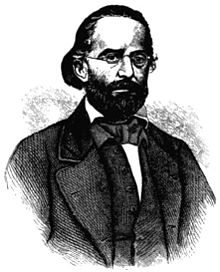
Joseph Pulitzer was a Hungarian-American politician and newspaper publisher of the St. Louis Post-Dispatch and the New York World. He became a leading national figure in the Democratic Party and was elected congressman from New York.
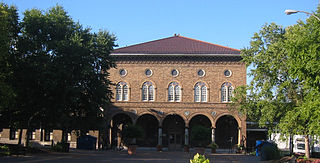
Soulard is a historic neighborhood in St. Louis, Missouri. It is the home of Soulard Farmers Market, the oldest farmers' market west of the Mississippi River. Soulard is one of ten certified local historic districts in the city of St. Louis.

The New Yorker Staats-Zeitung, nicknamed "The Staats", claims to be the leading German-language weekly newspaper in the United States and is one of the oldest, having been published since the mid-1830s. In the late 19th century, it was one of New York City's major daily newspapers, exceeded in circulation only by the New York World and the New-York Tribune. Among other achievements, as of its sesquicentennial anniversary in 1984 it had never missed a publication date, thereby laying claim to the title of being continuously published longer than any other newspaper in America.

Dutchtown is a neighborhood of St. Louis, Missouri. It is called "Dutch" from Deutsch, i.e., "German", as it was the southern center of German-American settlement in St. Louis in the early 19th century. It was the original site of Concordia Seminary, Concordia Publishing House, Lutheran Hospital, and other German community organizations. The German Cultural Society still has its headquarters there. St Anthony of Padua Catholic Church towers over the neighborhood and is a symbol of the neighborhood.
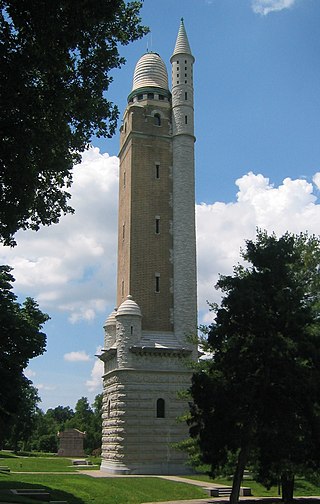
Compton Hill Reservoir Park is a 36-acre (15 ha) public park located in the Compton Heights neighborhood of St. Louis, Missouri, USA. Located on one of the highest elevations within the city, the park surrounds a 28-million-US-gallon (110,000 m3) reservoir used to provide water for many of the city's residents.

Illinois Staats-Zeitung was one of the most well-known German-language newspapers of the United States; it was published in Chicago from 1848 until 1922. Along with the Westliche Post and Anzeiger des Westens, both of St. Louis, it was one of the three most successful German-language newspapers in the United States Midwest, and described as "the leading Republican paper of the Northwest", alongside the Chicago Tribune. By 1876, the paper was printing 14,000 copies an hour and was second only to the Tribune in citywide circulation.

Emil Preetorius was a 19th-century journalist from St. Louis. He was a leader of the German American community as part owner and editor of the Westliche Post, one of the most notable and well-circulated German-language newspapers in the United States.
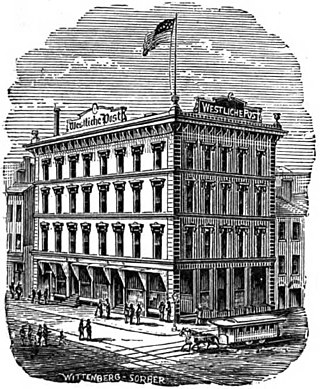
Westliche Post was a German-language daily newspaper published in St. Louis, Missouri. The Westliche Post was Republican in politics. Carl Schurz was a part owner for a time, and served as a U.S. Senator from Missouri for a portion of that time.

George Schneider (1823–1905) was a German American journalist and banker who served as editor-in-chief of the Illinois Staats-Zeitung. He was appointed by President Abraham Lincoln as the United States Consul in Elsinore, Denmark, at the outbreak of the American Civil War and later served as Collector of Internal Revenue for the 1st District of Illinois. He was a German refugee, one of the Forty-Eighters.
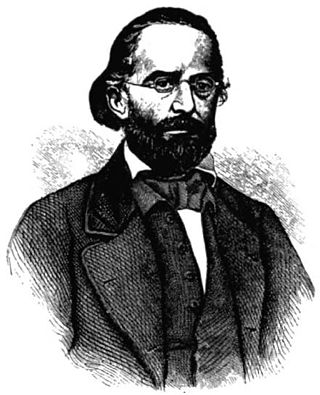
Henry Boernstein [in Europe, Heinrich Börnstein] was a German revolutionary who served as the publisher of the Anzeiger des Westens in St. Louis, Missouri, the oldest German newspaper west of the Mississippi River. He was also a political activist, author, soldier, actor and stage manager, and was briefly yet closely acquainted with Karl Marx during his tenure as publisher of the radical newspaper Vorwärts. He played a major role in keeping Missouri in the Union at the start of the Civil War.

Carl Daenzer [In Germany, Karl] founded the Westliche Post and was a long-time editor of the Anzeiger des Westens, two noted German-language newspapers in St. Louis, Missouri. He and Emil Preetorius were the Nestors of the German American press in the United States.
German American journalism includes newspapers, magazines, and the newer media, with coverage of the reporters, editors, commentators, producers and other key personnel. The German Americans were thoroughly assimilated by the 1920s, and German language publications one by one closed down for lack of readers.
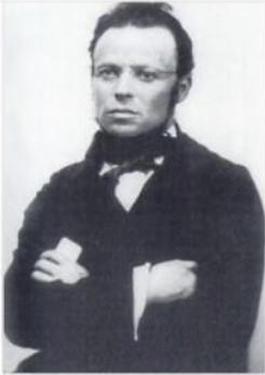
Karl Ludwig Bernays, baptized Ferdinand Cölestin Bernays and also known as Charles Louis Bernays, was a German journalist and associate of Karl Marx. Emigrating to the United States in the late 1840s, he worked as a journalist in Missouri and held a number of important positions in the Republican Party.

Thekla M. Bernays was an American author, journalist, artist, art collector, speaker, and suffragette.
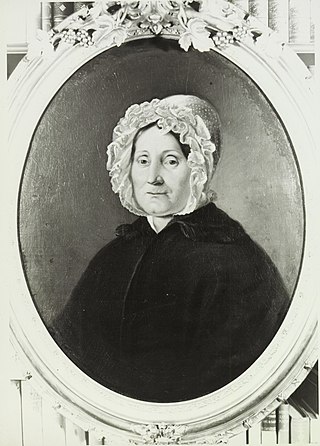
Marie "Julia" Soulard, née Cérre (1775–1845) was an American landowner. Soulard donated the land that hosts Soulard Farmers Market to the city of St. Louis, Missouri.
The Missouri Republican was a newspaper founded in 1808 and headquartered in St. Louis, Missouri. Its predecessor was the Morning Gazette. It later changed its name to St. Louis Republic.
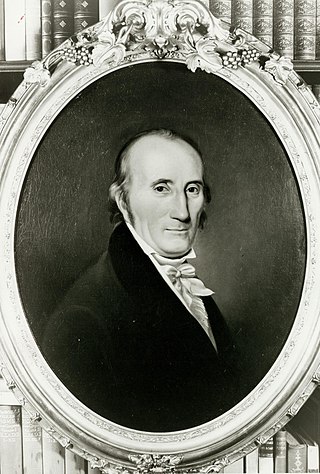
Antoine Pierre Soulard was an early settler and government official of St. Louis, Missouri.
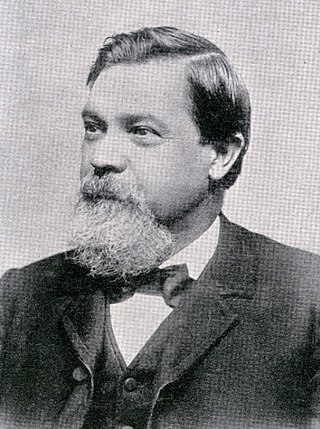
Joseph Eiboeck was an American newspaper editor, publisher, and author, who emigrated from Austria to the United States. Known as "Colonel Eiboeck", he was one of the most prominent newspaper editors in late 19th- and early 20th-century Iowa, writing in both German and English, and an influential opponent of Prohibition. For nearly 40 years, he edited the Iowa Staats-Anzeiger, a Des Moines newspaper focusing on state politics and advocating "personal liberty", the motto of anti-Prohibitionists. Although Eiboeck himself did not drink alcohol, he believed in individual choice over regulation, and campaigned fervently against anti-saloon legislation, representing "the extreme views of the liquor interests in Iowa politics" according to The New York Times.

